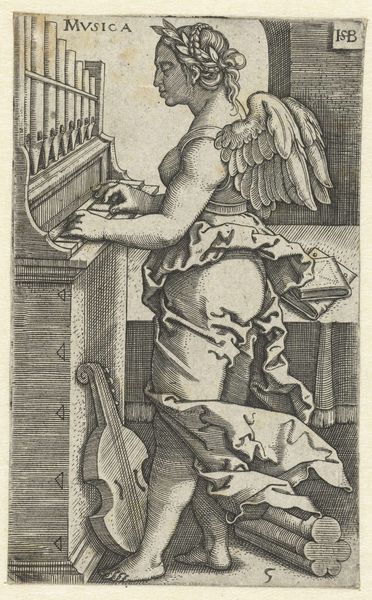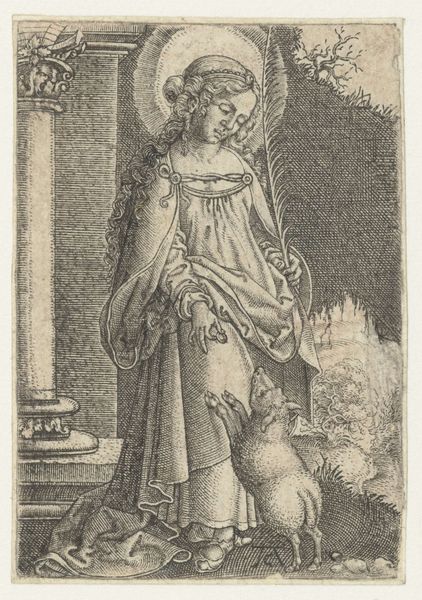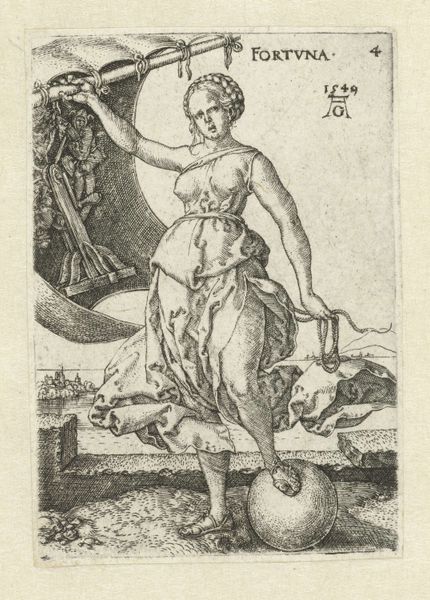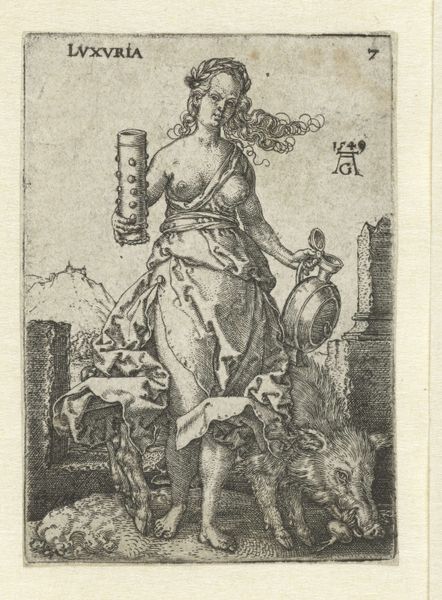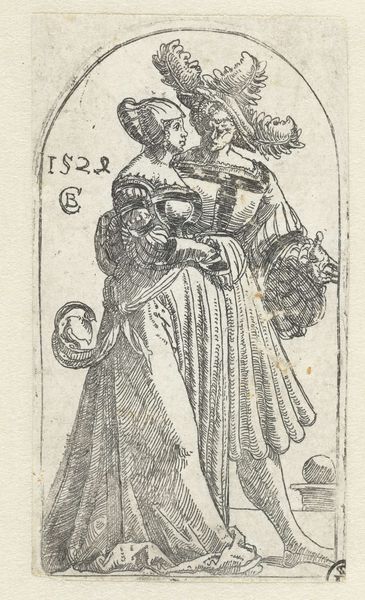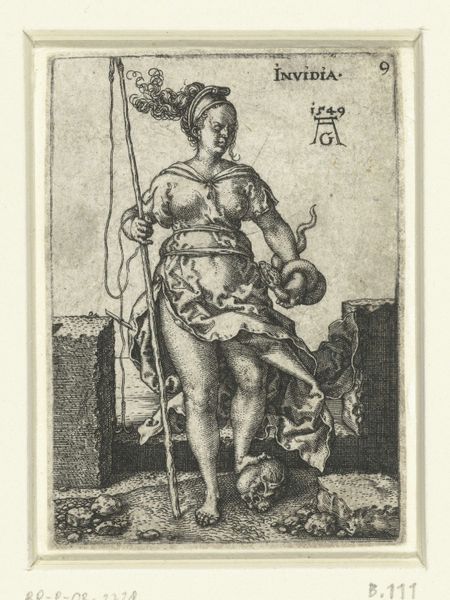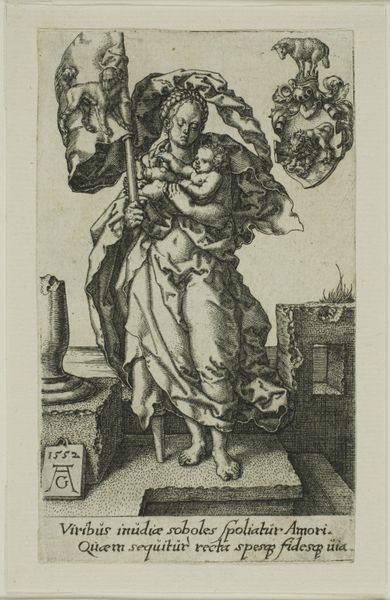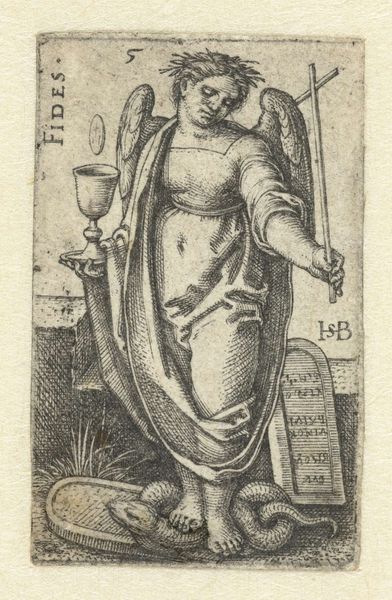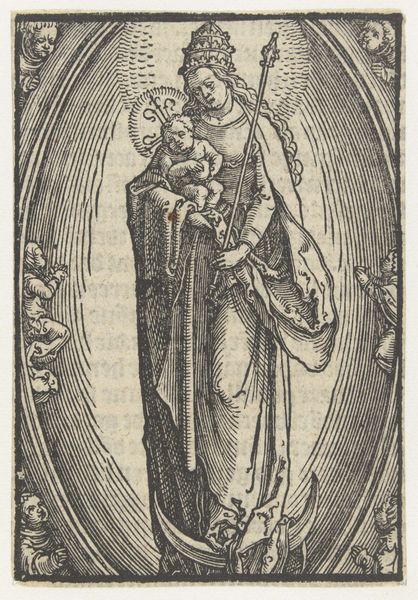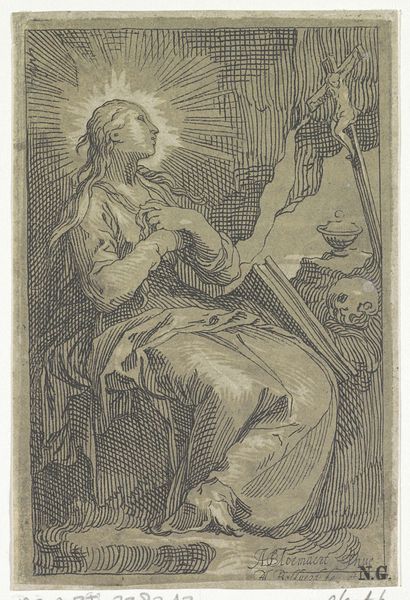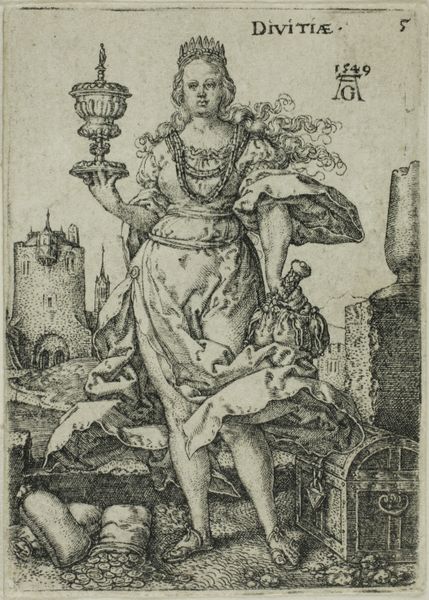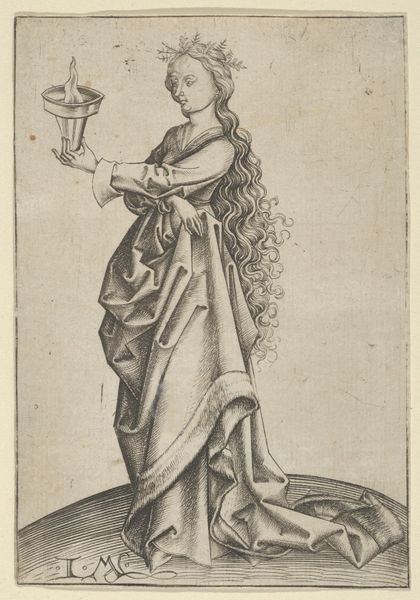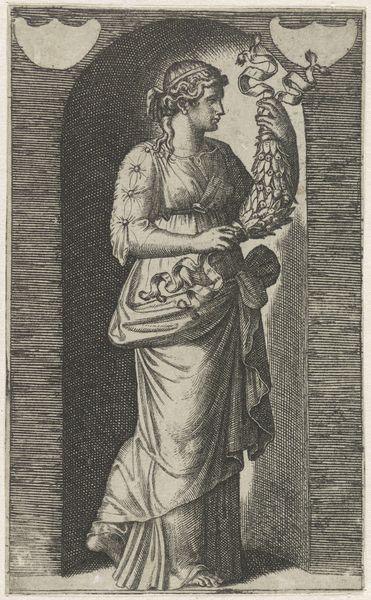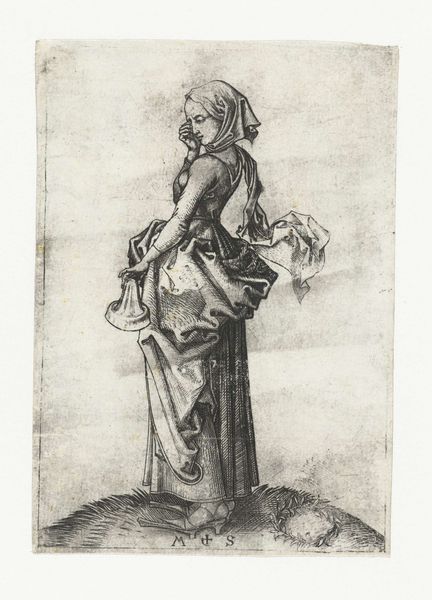
print, engraving
#
allegory
# print
#
figuration
#
11_renaissance
#
history-painting
#
northern-renaissance
#
engraving
Dimensions: height 70 mm, width 49 mm
Copyright: Rijks Museum: Open Domain
Curator: Immediately I see…serenity. The subject has such calm energy—though the engraving itself is stark, black and white. Editor: Indeed. We’re looking at "Vreugde," a piece created by Heinrich Aldegrever in 1549. This engraving is currently held at the Rijksmuseum. What’s grabbing you about its visual components? Curator: Well, there’s this beautiful figure playing the harp. Her gown, it almost swirls—and the dove hovering above…it feels as though she’s conjuring that peace into being. I wonder what her song is about. Perhaps the etymology can tell us what Aldegrever's song is! Vreugde, "joy"... so this engraving personifies joy, what an absolutely interesting approach! Editor: A very close reading is in order! Let’s deconstruct further: the composition frames "Joy" centrally, set against ruins—almost as if joy persists despite decay, and what is really interesting is how she is both integrated within the composition but distinctly contrasts with the environment with soft swirling clothing and dynamic harp strings, drawing the viewer's eye centrally. Curator: You know, I never thought about that. The ruins suggesting the cyclical nature of joy itself. This northern renaissance allegory captures human existence and its ephemeral nature. I want to think about the feeling she feels! Editor: It’s interesting to note how Aldegrever masterfully employs the engraving technique to create contrast and shadow, lending the figure volume, especially those feet and legs and how it anchors this Joy onto the space. This heightens the allegory's impact— the dove and the harp create such a cohesive semantic field with the main allegory figure of the engraving. Curator: All this analysis makes me wonder—what if she suddenly decided to ditch the harp for a banjo? Or if that dove decided it preferred to be a sassy seagull, all in all I hope she gets to keep her job! It would surely turn this allegory upside down… Editor: I appreciate that. And perhaps such playfulness isn't at odds with Aldegrever's approach! With his allegory now appreciated on different angles, Aldegrever manages to invoke contemplation—perhaps even inspire one to strum one's own allegorical joy from nothingness.
Comments
No comments
Be the first to comment and join the conversation on the ultimate creative platform.
